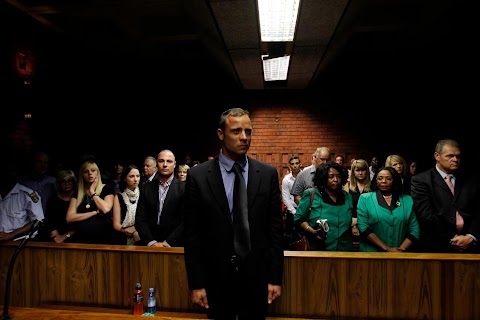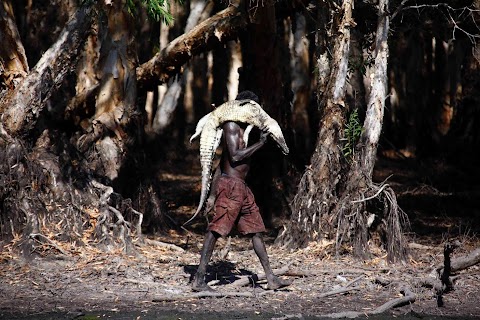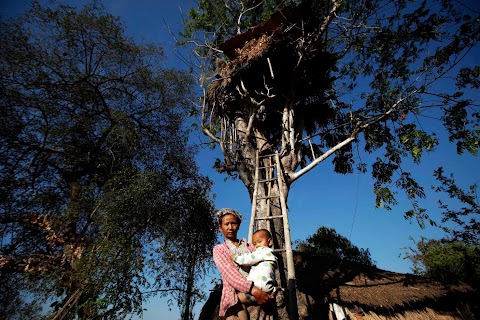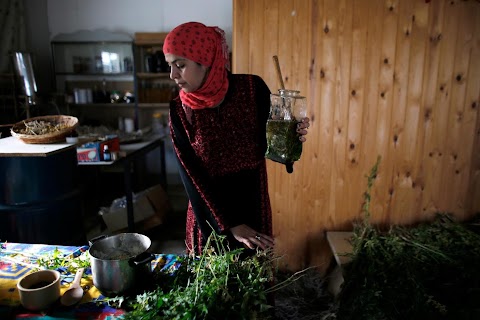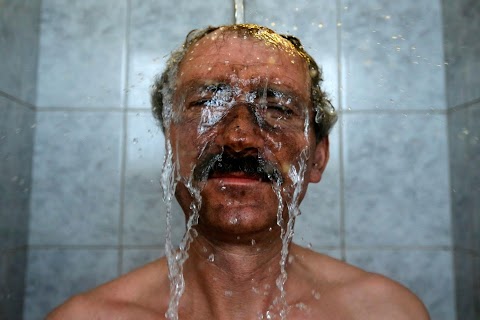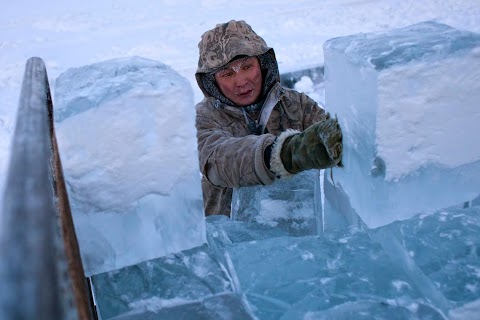
The pole of cold
 Maxim Shemetov
Maxim Shemetov
A man loads great chunks of ice onto a truck outside Yakutsk, capital of the Republic of Sakha in the far northeast of Russia.
Ice is one thing that is in no short supply there: the coldest temperatures ever recorded in the northern hemisphere have been registered in Sakha. And yet people can still be found living in even the chilliest parts of the remote region.

Deep in the snowy landscape of Sakha lies the Oymyakon valley, also known to some as the "Pole of Cold". The coldest temperature in the northern hemisphere since the beginning of the 20th century was registered here in 1933, when thermometers hit a freezing -67.8 degrees Celcius (-90 degrees Fahrenheit).
But despite harsh conditions people still live in the heart of the Oymyakon valley in the village of Tomtor, which is equipped with schools, a post office, a bank and even an airport runway (albeit open only in the summer).
Slideshow

A man bundled up in winter clothes passes a sign that reads: "Oymyakon 'Pole of Cold'".

Snow and ice cover the roof of a house in the village of Tomtor.

A temperature of -45 degrees Celsius (-49 degrees Fahrenheit) is shown on the outside of a building in Yakutsk.

People stand shrouded in mist as they wait to cross a road in Yakutsk.

Smoke rises above houses in the village of Maralayi.

Sergei Burtsev, a 41-year-old meteorologist living in Tomtor, prepares to launch a meteorological balloon.

A blanket of snow shrouds houses in Tomtor.

Oymyakon resident Igor Vinokurov, 35, knocks snow and ice off a frozen washing line.

A dog curls up in a pile of wood shavings.

A local girl is wrapped up in furs against the cold.

Lumberjacks Alexey Egorov, 45, (left) and Semion Vinokurov, 53, cut down a tree in the forest outside Oymyakon.

Ships are moored for the winter by a river outside Yakutsk.

A man takes a drink in the cabin of his truck during a stop in Ytyk-Kyuyol, some 200 km northeast of Yakutsk.

A car drives through the snow at night near Vostochnaya meteorological station.

A UAZ minibus drives along a road across the Lena river outside Yakutsk.
"Now only the ice-bound door separates me from the cold. I feel like an astronaut going into Space. "
One loses all bearings when faced with the shroud of white that obscures everything in the Siberian city of Yakustk in mid January. Only the traffic lights and gas pipelines overhanging the roads help you to find your way. Wrapped in frosty fog, life in the city seems frozen in a sleepy half-light. It is -48 Celsius outside.
Before venturing out, I put on two layers of thermal underwear, trousers, two sweaters, pants up to my waist and huge, cold-weather boots. I pull close the hood of my down jacket and fasten it so that only my eyes are exposed. At last, I slip on two pairs of gloves and head for the entrance hall – the airlock. Now only the ice-bound door separates me from the cold. I feel like an astronaut going into Space.
I do not have enough time to freeze today - the minibus is waiting for me at the corner and I pile in with my gear. Our route lies along a Stalin-era road that is officially called “Kolyma Federal Highway”. Locals call it "the road on bones" after the thousands of Gulag prisoners who perished building it in the middle of the 20th century.
The sights that it passes are "terra incognita" even for most of the locals. As we travel further and further northeast towards the snowy foothills from the provincial capital of Yakustk, the signs of life appear less and less frequent. Down the road, one can travel over 200 km without seeing a homestead. Cell phone coverage cuts out when we arrive at Handyga. Fifty kilometres later we load up on tanks of fuel at the petrol station that is the last human outpost at the edge of the vast and mountainous taiga. Only the occasional UAZ minibus (nicknamed bukhanka – or “loaf of bread” there) or truck breaks the monotony of the endless, empty road.
After two days on the road, we finally arrive in the Oymyakon valley - the Pole of Cold. This is the coldest place in the northern hemisphere according to most Russian climatologists. Thermometers registered a record chill of -67.8 degrees Celsius in 1933 - shortly after weather monitoring began here at the end of the 1920s.
And yet, here are schools, a post office, a bank, even an airport runway (albeit open only in the summer) - all the trappings of almost-civilised life in the valley's centre at Tomtor. I could not help asking local people how they carried on a semblance of normal life in such extreme conditions. What I heard as a response was an anecdote from Sergey Zverev, a smiling villager in his 40s. Class was cancelled once when he was a schoolboy because the air temperatures had dropped to -65 degrees Celsius. To celebrate, he and his classmates got together to play football on the icy streets. Did I need any better answer?
In truth, when temperatures dropped to -55 a few days after my arrival, I stopped noticing the cold. With no wind chill and the air sapped of moisture, a day like that here is comparable to Moscow at -25. I even stripped down to a fleece jacket to chop firewood outside for a half an hour.
It’s hard to say what is most impressive here: the great people who live their lives under severe and constant pressure from nature or the breathtaking vibe. The urban style in Yakutia is very different from that of big Russian cities. Here, where people live side by side in unimaginable circumstances, everything seems real and tougher. When you grab a knife, it cuts frozen meat like butter. If you notice a car, I bet it would be an off-road vehicle. When it is freezing, the cold is much harder than you can imagine. But the vibe is not created by nature – it is made by people. Pensive, tough and willing to help a stranger.
Will I come back? Oh yeah.
